Il tuo messaggio è stato inviato.
Elaboreremo la vostra richiesta e vi ricontatteremo al più presto.
Il modulo è stato inviato con successo.
Ulteriori informazioni sono contenute nella vostra casella di posta elettronica.
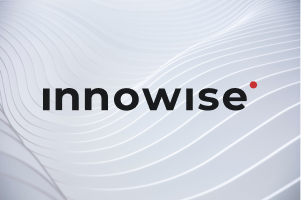
Selezionare la lingua
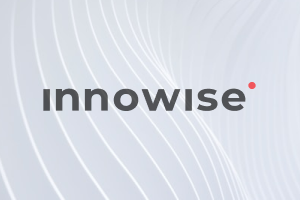
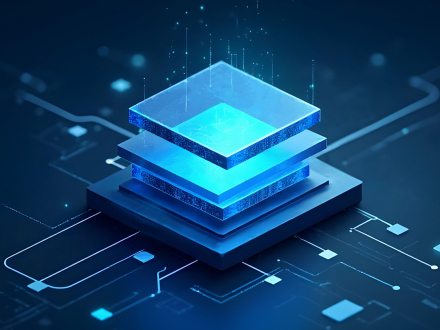
L'influenza di Ethereum sul mondo della blockchain è innegabile. È alla base di innumerevoli dApp, contratti intelligenti e token economy. Tuttavia, il potenziale di Ethereum è accompagnato da un certo bagaglio: elevate spese di benzina, lentezza delle transazioni e congestione della rete nei momenti di punta. È qui che entra in gioco Layer 2. Non si tratta più di soluzioni di nicchia, ma di soluzioni essenziali per la tabella di marcia di Ethereum e per il raggiungimento del prossimo miliardo di utenti.
Scegliere la blockchain Layer 2 giusta può sembrare come scegliere la pizza perfetta: ci sono così tante opzioni e ognuna porta qualcosa di unico in tavola. Che si tratti di DeFi, NFT, giochi o soluzioni aziendali, ogni blockchain ha i suoi vantaggi e le sue peculiarità. Alcuni puntano sulla velocità, altri sono fanatici della sicurezza, altri ancora vogliono solo giocare bene con le applicazioni Ethereum esistenti. Non si tratta di una soluzione unica per tutti.
Noi di Innowise siamo da tempo immersi nel mondo del Layer 2. Sappiamo cosa funziona e perché, e siamo qui per aiutarvi a fare una scelta intelligente e strategica. Sappiamo cosa funziona e perché, e siamo qui per aiutarvi a fare una scelta intelligente e strategica. Siete pronti a esplorare i principali concorrenti? Facciamo un salto!
I rollup sono il cuore della strategia di scalabilità Layer 2 di Ethereum. Essi raggruppano molte transazioni fuori dalla catena, quindi inviano una singola prova compressa a Ethereum. In questo modo si riducono le commissioni, si alleggerisce la congestione e si velocizzano le operazioni, il tutto mantenendo intatta la sicurezza di base di Ethereum. È così che otteniamo la scalabilità senza sacrificare la decentralizzazione.
Ci sono due attori principali nel gioco del rollup: rollup ottimistici o a conoscenza zero (ZK). Ognuno di essi ha i suoi punti di forza e i suoi compromessi e la comprensione di queste differenze vi aiuterà a prendere decisioni più informate sulla soluzione Layer 2 più adatta alla vostra applicazione.
Pensate a rollup ottimistici come quelli ottimisti nel mondo della blockchain. Essi danno per scontato che le transazioni siano valide fin dall'inizio, le raggruppano fuori dalla catena e le inviano a Ethereum senza effettuare subito un doppio controllo. Al contrario, lasciano una rete di sicurezza - una "finestra di sfida" (di solito circa una settimana) in cui chiunque può segnalare una transazione sospetta. Le blockchain L2 come Arbitrum, Optimism e Base seguono questo modello perché è veloce ed economico. Lo svantaggio? Potreste dover aspettare fino a una settimana per ritirare i fondi nella catena principale, a meno che non usiate reti di liquidità o ponti veloci per accelerare le cose.
Ora, l'immagine Rollup ZK come quelli prudenti. Non si limitano a prendere le transazioni al valore nominale. Al contrario, dimostrano crittograficamente che ogni lotto è legittimo prima di trasmetterlo a Ethereum. Questo significa prelievi più rapidi e sicurezza assoluta, senza attese per le controversie. zkSync, Starknet e Polygon zkEVM giurano su questo metodo. La tecnologia alla base? Prove come SNARK e STARK: garanzie matematiche che le transizioni di stato sono corrette. Il problema è che la generazione di queste prove richiede un notevole calcolo, rendendo i rollup ZK un po' più complessi e costosi da sviluppare. Ma per le applicazioni che necessitano di un risultato finale istantaneo e di una sicurezza rigorosa, non c'è dubbio che si tratti di una scelta obbligata.
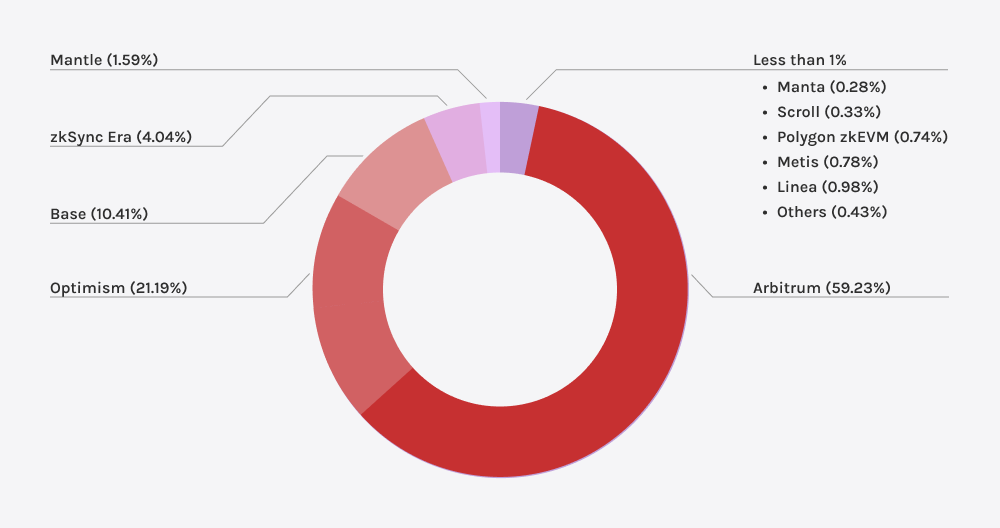
Ora che abbiamo chiarito le cose sui rollup e su come funzionano sotto il cofano, è il momento di esaminare ciò che ogni blockchain di livello 2 porta effettivamente sul tavolo e come scegliere quella giusta per il vostro progetto!
Arbitrum è come il turbocompressore di Ethereum: un rollup ottimistico che raggruppa le transazioni e le invia alla catena principale, riducendo le spese di gas e aumentando la velocità. La parte migliore? È compatibile con EVM, quindi gli sviluppatori possono trasferire le loro dApp Ethereum con il minimo problema. Con $2 miliardi+ TVL e un ecosistema DeFi in fermento, è una delle soluzioni Layer 2 più affidabili.
Il Aggiornamento Nitro ha fatto un salto di qualità, rendendo le transazioni più veloci ed economiche e aggiungendo il supporto per WebAssembly (WASM). Ciò significa che gli sviluppatori possono ora codificare in Rust e C++. Inoltre, l'imminente Funzione stilo permetterà agli sviluppatori Web2 di immergersi nella blockchain con linguaggi familiari. È lo stesso Arbitrum, ma più veloce, più economico e più accessibile.
Arbitrum è diventata la piattaforma di riferimento per Progetti DeFi grazie al suo elevato throughput, ai bassi costi di transazione e alla compatibilità con i più diffusi protocolli Ethereum. Le principali applicazioni della DeFi come Uniswap, Aave e Curva hanno lanciato su Arbitrum per trarre vantaggio dalla sua scalabilità. I rollup ottimistici raggruppano le transazioni per ridurre i dati e le commissioni sulla catena, mentre l'equivalenza EVM di Arbitrum consente ai protocolli DeFi di mantenere la loro funzionalità senza un'ampia riconfigurazione.
La forte liquidità della piattaforma e l'efficiente elaborazione delle transazioni ne fanno una scelta interessante per agricoltura a rendimento, prestiti e commercio decentralizzato. Con l'aggiornamento Nitro, i protocolli DeFi su Arbitrum beneficiano di tempi di elaborazione più rapidi e di costi di gas inferiori, con un impatto diretto sull'esperienza dell'utente e sull'efficienza del protocollo.
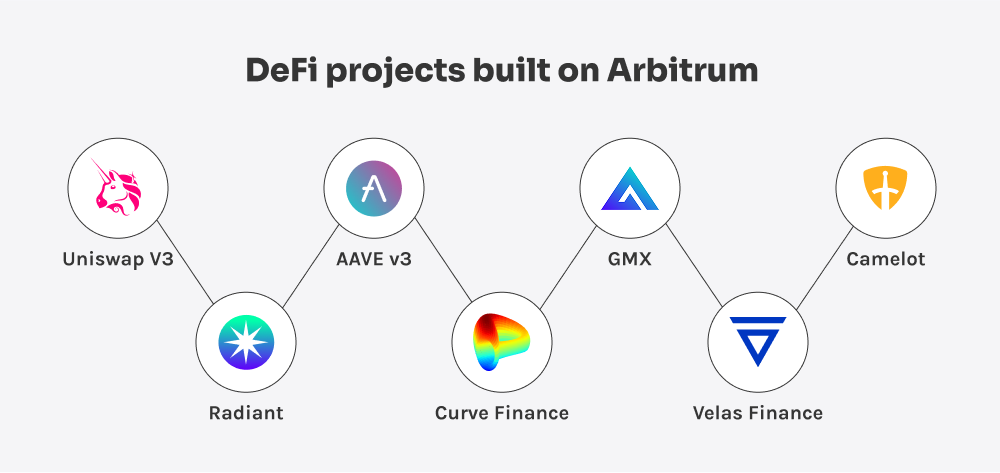
DEX come SushiSwap e GMX amano Arbitrum per la sua bassa latenza e le minime commissioni di gas, che rendono il trading in tempo reale un gioco da ragazzi con meno slittamenti. Anche il mining della liquidità è un vantaggio, poiché i costi più bassi significano maggiori profitti per i trader che utilizzano strategie ad alta frequenza. Il modello di consenso di Arbitrum assicura una rapida finalizzazione delle transazioni, mantenendo intatta la sicurezza di Ethereum, e i suoi ponti veloci rendono lo spostamento dei token tra L1 e L2 un'esperienza senza problemi.
Inoltre, con integrazioni come Protocollo Hop e Connext, Arbitrum fa fluire liberamente le attività attraverso le reti e mantiene la liquidità in profondità per gli utenti dei DEX. Questo mix di commissioni ridotte, transazioni veloci e liquidità cross-chain rende Arbitrum perfetto per i DEX ad alto volume.
Le tariffe ridotte e l'elevata produttività fanno di Arbitrum una destinazione privilegiata per i progetti NFT. Mercati come Tesoro DAO sfruttare l'efficienza dei costi della catena, consentendo il conio e il commercio di NFT a prezzi accessibili. L'integrazione delle più diffuse soluzioni di portafoglio, insieme al supporto nativo per ERC-721 e ERC-1155 standard, semplifica il processo di creazione e gestione degli NFT.
Optimism è un rollup ottimistico che scala Ethereum senza interrompere la compatibilità delle dApp. Conosciuto per la sua un forte ecosistema di DeFi, una governance guidata dalla comunità e un finanziamento di beni pubblici, Optimism è un punto di riferimento per gli sviluppatori che realizzano applicazioni scalabili. L'OP Stack è una caratteristica di spicco che consente agli sviluppatori di creare catene Layer 2 personalizzate e di creare una rete diversificata e interconnessa.
L'ecosistema DeFi di Optimism, in piena espansione, attira progetti che necessitano di commissioni più basse e di un throughput più elevato. Grandi nomi come Synthetix e Uniswap V3 sono passati a Optimism per godere di transazioni più veloci e costi di gas molto più bassi. Protocollo perpetuo è uno dei più importanti, che sfrutta la rapida finalità di Optimism per il trading ad alta frequenza.
Con il recente aggiornamento di Bedrock, Optimism offre equivalenza EVM quasi completa, che facilita l'implementazione dei protocolli DeFi basati su Ethereum con modifiche minime. Questa compatibilità accelera lo sviluppo, riduce i costi e porta più costruttori di DeFi nell'ecosistema.
Il modello di governance di Optimism è una miscela unica di coinvolgimento della comunità e supporto dell'ecosistema. Il Collettivo Optimism finanzia progetti open-source attraverso Finanziamento retroattivo dei beni pubblici (RetroPGF), che premia gli sviluppatori dopo che hanno realizzato strumenti di grande impatto. Questo approccio motiva i miglioramenti continui piuttosto che le sovvenzioni iniziali.
Il token OP svolge un ruolo cruciale nella governance e consente ai titolari di token di votare sulle proposte di finanziamento e sullo sviluppo dell'ecosistema. L'integrazione della governance con l'OP Stack significa che gli sviluppatori possono creare modelli di governance personalizzati per i propri rollup, allineando le dinamiche della comunità con gli obiettivi del progetto. Questa flessibilità è particolarmente interessante per DAO e piattaforme incentrate sulla comunità.
L'OP Stack fa sì che Optimism si distingua come qualcosa di più di una semplice soluzione Layer 2: è un framework per la creazione di rollup specifici per le applicazioni. Gli sviluppatori possono creare catene L2 su misura che mantengono l'interoperabilità all'interno del più ampio ecosistema Optimism. Un esempio lampante è Base, sviluppato da Coinbase, che utilizza OP Stack per costruire una catena ottimizzata per un elevato throughput delle transazioni e una stretta integrazione con l'ecosistema di Coinbase.
La modularità di OP Stack consente agli sviluppatori di personalizzare gli elementi chiave, tra cui l'ambiente di esecuzione, il modello di consenso e il quadro di governance. Questo approccio modulare significa che gli sviluppatori possono lanciare le proprie catene L2 pur facendo parte della Superchain, una rete interconnessa di rollup basati su OP che condividono liquidità e dati. Il risultato è un ambiente scalabile e collaborativo in cui i progetti possono crescere in modo indipendente pur beneficiando della sinergia dell'ecosistema.

Base, sviluppata da Coinbase, è un rollup Optimistic costruito utilizzando l'OP Stack. È stata progettata per supportare elevati volumi di transazioni e per integrarsi perfettamente con l'ecosistema di Coinbase, rendendola una piattaforma interessante per Progetti incentrati sull'NFT e applicazioni guidate dalla comunità. Dal suo lancio, Base ha registrato una rapida crescita, guidata dall'attenzione alle transazioni a basso costo e alla facilità di accesso per gli utenti, grazie all'integrazione diretta con Coinbase Wallet e alle rampe fiat.
Base si è rapidamente affermata come hub principale per i progetti NFT grazie al suo design incentrato sul NFT. I creatori godono di commissioni ridotte e di un'elevata visibilità, mentre i progetti possono sfruttare la rapidità delle transazioni di Base per i grandi lanci di NFT e gli eventi della comunità. L'integrazione con Coinbase Wallet rende agevole la coniazione, il commercio e la gestione degli asset digitali.
Uno dei punti di forza di Base è la capacità di gestire eventi di conio di massa senza rallentamenti della rete. Utilizzando l'ottimizzazione del throughput di OP Stack, Base garantisce che gli eventi ad alta richiesta si svolgano senza problemi.
Base supporta anche le interazioni tra le catene NFT e consente agli asset di spostarsi tra Base, Ethereum e altre catene basate su OP nella Superchain. Questa interoperabilità aiuta i progetti NFT a espandere la loro portata su più reti e ad accedere a un pubblico più ampio.
Le dApp sociali prosperano su Base grazie alle transazioni a basso costo e alla perfetta integrazione con Coinbase. Questo lo rende ideale per le piattaforme di comunità, i token sociali e le app di contenuti generati dagli utenti. L'architettura di Base supporta anche la tokenomics integrata. Consente alle app sociali di ricompensare gli utenti con token nativi per le interazioni, la creazione di contenuti e la partecipazione, aumentando così il coinvolgimento e la fidelizzazione.
Sfruttando l'OP Stack, Base consente meccanismi di governance personalizzati, in modo che le dApp della comunità possano implementare funzioni di voto e di decisione, il che è perfetto per i progetti che mirano a costruire DAO della comunità o piattaforme guidate dagli utenti.
Uno dei punti di forza di Base è l'abbassamento della barriera d'ingresso per gli utenti non crittografici. I nuovi utenti possono passare facilmente dalla finanza tradizionale alle applicazioni decentralizzate senza i tipici attriti dell'onboarding delle criptovalute. Sfruttando il fiat on-ramp di Coinbase, gli utenti possono finanziare i loro portafogli direttamente dai loro conti bancari, il che rende molto più facile iniziare a interagire con le dApp su Base.
Questo approccio di facile utilizzo è particolarmente utile per i progetti rivolti a un pubblico mainstream, come ad esempio applicazioni per i consumatori, programmi di fidelizzazione o oggetti da collezione digitali. La possibilità di collegare senza soluzione di continuità Base con i conti Coinbase esistenti fornisce un senso di familiarità e di fiducia, fondamentale per l'ingresso di utenti che potrebbero esitare a tuffarsi nella criptovaluta.
I moderni stack tecnologici L2 stanno diventando più personalizzabili che mai, quasi come un approccio "blockchain-as-a-stack" in cui è possibile scegliere i moduli necessari. Innowise può aiutarvi a decidere se utilizzare le soluzioni L2 esistenti o se costruire la vostra L2, in base alle vostre esigenze aziendali. Siamo presenti fin dall'inizio, scegliendo la tecnologia giusta, impostando i validatori, collegandosi a Ethereum e assicurandoci che tutto funzioni senza problemi.

Direttore tecnologico
zkSync Era è un rollup ZK all'avanguardia che si concentra sulla fornitura di transazioni veloci e sicure. Essendo uno dei primi rollup ZK di uso generale ad essere stato lanciato, zkSync Era supporta sia Solidità e Vyper, che lo rende accessibile agli sviluppatori che hanno già familiarità con l'ecosistema Ethereum. L'attenzione è rivolta soprattutto alle applicazioni FinTech e DeFi, dove velocità e sicurezza sono fondamentali.
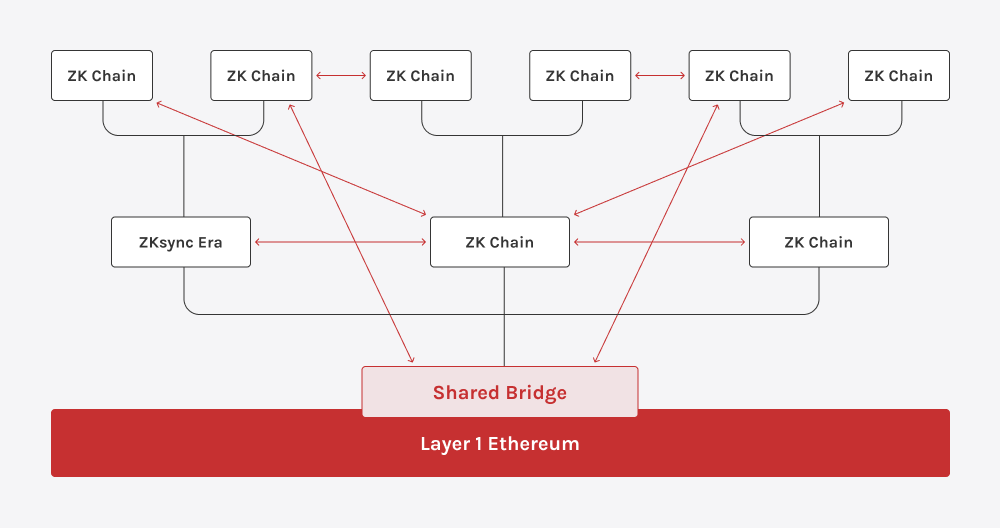
zkSync Era eccelle come piattaforma per le soluzioni di pagamento, grazie alla sua rapida finalizzazione e alle commissioni di transazione minime. La capacità della rete di confermare le transazioni quasi istantaneamente la rende ideale per pagamenti peer-to-peer, soluzioni di micropagamento e applicazioni finanziarie B2B. I progetti incentrati sulla facilitazione delle transazioni in tempo reale possono sfruttare zkSync per ridurre i costi operativi e offrire un'esperienza utente più fluida.
L'astrazione del conto migliora ulteriormente le soluzioni di pagamento, consentendo agli utenti di pagare le tariffe del gas in qualsiasi token ERC-20 supportato, anziché solo in ETH. Questa flessibilità riduce l'attrito per gli utenti finali, soprattutto quando si integrano i pagamenti nelle applicazioni finanziarie tradizionali. Supportando i portafogli multi-firma e il recupero sociale, zkSync affronta anche i problemi di sicurezza comuni che sorgono quando si gestiscono fondi in un ambiente decentralizzato.
zkSync Era sta rapidamente diventando uno dei preferiti dagli sviluppatori DeFi grazie al suo approccio orientato alla sicurezza e all'elevato throughput. Protocolli come SyncSwap e Mute sfruttare le capacità di zkSync per offrire un trading decentralizzato sicuro, veloce ed efficiente dal punto di vista dei costi. I trader ad alta frequenza, in particolare, beneficiano della capacità della rete di elaborare più transazioni al secondo senza incorrere in commissioni di gas proibitive.
Il design di zkEVM è fondamentale in questo caso, in quanto garantisce che i contratti intelligenti possano essere eseguiti con la stessa efficienza di Ethereum. Questo facilita la migrazione del codice dei progetti DeFi esistenti senza modifiche significative. zkSync supporta inoltre estrazione della liquidità, coltivazione dei rendimenti e prestiti decentralizzati attraverso strumenti integrati e partnership con le principali piattaforme DeFi. La finalizzazione istantanea e la riduzione delle commissioni di gas sono vantaggi significativi per gli utenti che devono spostare rapidamente i fondi tra i protocolli o partecipare a strategie di trading automatizzate.
Le tariffe ridotte e i rapidi tempi di conferma fanno di zkSync una scelta eccellente per le piattaforme NFT. Progetti incentrati su coniatura, negoziazione e trasferimento di NFT possono sfruttare la scalabilità di zkSync per offrire agli utenti un'esperienza senza attriti. A differenza di alcune soluzioni L2 che richiedono lunghi periodi di prelievo, la rapida finalizzazione di zkSync significa che i proprietari di NFT possono trasferire o vendere istantaneamente i loro asset, mantenendo il mercato dinamico e liquido.
Un altro vantaggio è la focalizzazione di zkSync su conio a efficienza di gas, che riduce in modo significativo il costo di creazione di nuovi NFT rispetto a L1 di Ethereum. Questa riduzione dei costi incoraggia gli artisti e i creatori a sperimentare drop di NFT ad alto volume e serie collezionabili senza preoccuparsi delle esorbitanti commissioni di gas. La perfetta integrazione con il portafoglio supporta anche la gestione multi-catena di NFT, consentendo agli utenti di interagire con gli asset memorizzati sia su zkSync che su Ethereum.
Starknet è un rollup ZK costruito sulla tecnologia STARK (Scalable Transparent Arguments of Knowledge), progettata per migliorare la scalabilità di Ethereum consentendo transazioni veloci, sicure ed efficienti in termini di costi. Ciò che distingue Starknet è l'uso della tecnologia Lingua del Cairo invece di Solidity per scrivere contratti più intensivi dal punto di vista computazionale e più difficili da replicare su altre catene. Questo rende Starknet particolarmente adatto a contratti complessi Protocolli DeFi, giochi on-chain e applicazioni ad alto contenuto di dati.
Il framework StarkEx, anch'esso sviluppato da StarkWare, alimenta applicazioni ad alte prestazioni come dYdX e Immutable X, ma Starknet fa un ulteriore passo avanti offrendo un rollup ZK completamente generico. L'attenzione alla sperimentazione e all'innovazione lo rende un ambiente ideale per progetti che si spingono oltre i confini della tecnologia blockchain.
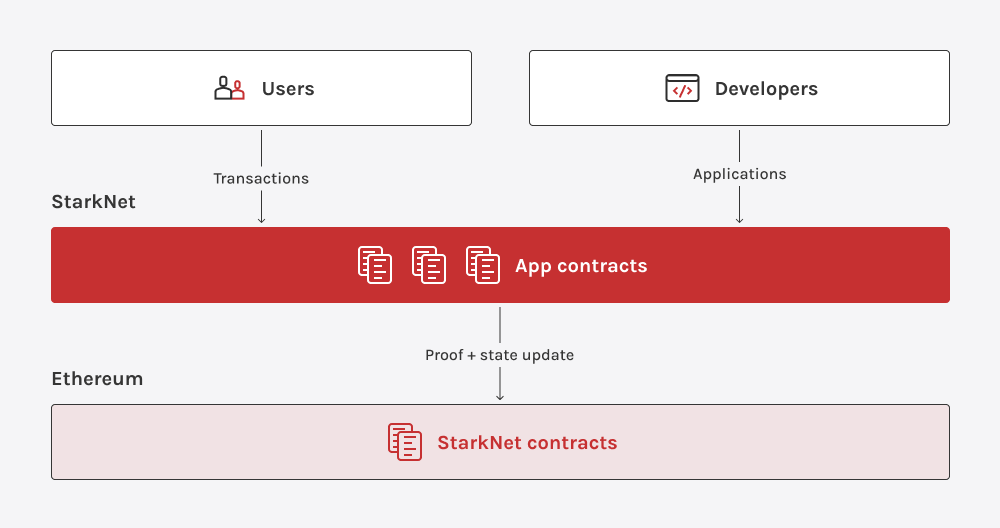
Starknet si sta rapidamente facendo un nome nello spazio DeFi grazie alla sua capacità di gestire calcoli complessi senza costi elevati. Progetti come JediSwap e MySwap Sfruttate l'elevato throughput di Starknet per un trading veloce e ad alta frequenza e per l'aggregazione della liquidità. A differenza di altri rollup ZK, l'architettura basata su STARK di Starknet elabora grandi quantità di dati senza problemi, rendendolo una scelta solida per le applicazioni DeFi avanzate.
Grazie a Cairo, gli sviluppatori possono scrivere contratti che gestiscono calcoli intricati, perfetti per il trading algoritmico. Sebbene Cairo abbia una curva di apprendimento più ripida rispetto a Solidity, ne vale la pena per gli sviluppatori che vogliono costruire prodotti finanziari all'avanguardia. Inoltre, l'attiva comunità open-source DeFi di Starknet mantiene le cose collaborative e innovative.
Starknet sta rapidamente diventando il network di riferimento per giochi e app interattive su catena. La sua capacità di gestire logiche di gioco complesse e l'elevato flusso di transazioni la rendono perfetta per i giochi decentralizzati in tempo reale. Grazie all'efficienza del Cairo, gli sviluppatori possono costruire meccaniche complesse e interazioni in più fasi direttamente sulla catena, senza i ritardi che si riscontrano sulle catene basate su EVM.
Per gli sviluppatori di videogiochi, l'architettura modulare dei contratti di Starknet consente funzionalità come classifiche su catena, trasferimenti di risorse in tempo reale e aggiornamenti sullo stato del gioco, Il tutto evitando la congestione del traffico. Inoltre, la DAO di Starknet Gaming fornisce sovvenzioni e supporto, alimentando l'innovazione.
Starknet è una soluzione che cambia le carte in tavola per le dApp che fanno uso di dati e per l'elaborazione decentralizzata dei dati. Se state costruendo qualcosa che deve gestire grandi insiemi di dati, come ad esempio apprendimento automatico o analisi su catena, l'architettura di Starknet è in grado di elaborare e verificare questi dati in modo rapido e sicuro. Grazie alle prove STARK, Starknet può scalare senza rallentamenti, il che è perfetto per progetti come mercati di dati, analisi in tempo reale o mercati di previsione. che necessitano di una rapida elaborazione dei dati.
Grazie all'approccio modulare e al Cairo, gli sviluppatori possono facilmente creare pipeline di dati direttamente sulla catena, in modo da poter eseguire trasformazioni di dati complesse per cose come i cruscotti DeFi che attingono da più fonti. E con prove ricorsive, Starknet porta il throughput dei dati a un livello superiore, consentendo una validazione dei dati continua e senza soluzione di continuità per casi d'uso quali governance on-chain o metriche finanziarie in tempo reale.
Polygon zkEVM è un rollup ZK compatibile con Ethereum, progettato per portare i vantaggi di sicurezza della tecnologia ZK in un ambiente EVM familiare. Come parte della più ampia strategia multi-scala di Polygon, zkEVM consente agli sviluppatori di migrare le dApp Ethereum esistenti senza alcuna modifica del codice. La sua piena equivalenza con EVM lo rende molto interessante per gli sviluppatori che già lavorano all'interno dell'ecosistema di Ethereum, consentendo loro di sfruttare i vantaggi di zk-rollup senza dover imparare nuovi linguaggi o apportare modifiche sostanziali.
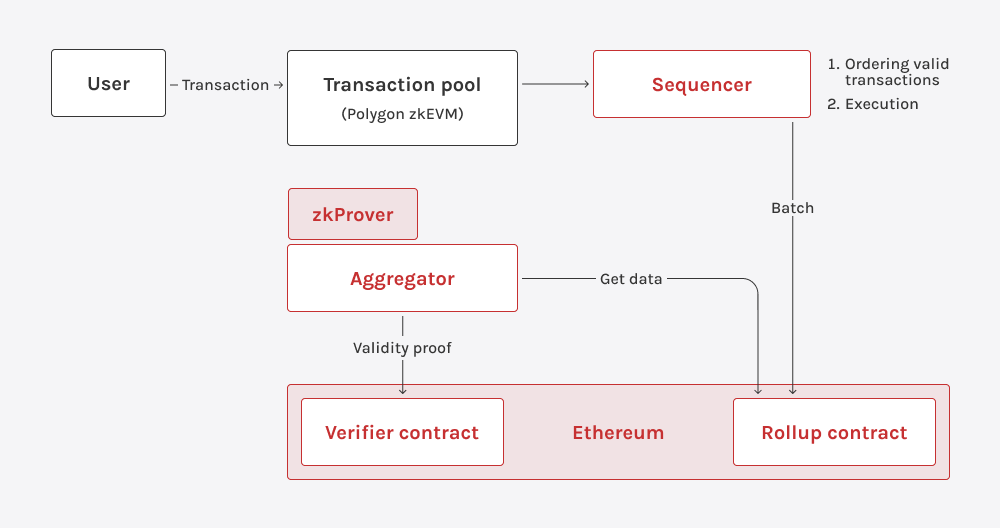
Polygon zkEVM è diventato rapidamente un punto di riferimento per le piattaforme DeFi che necessitano di un elevato throughput e di sicurezza. Progetti come Aave e QuickSwap stanno implementando su Polygon zkEVM per offrire prestiti e trading cross-chain senza soluzione di continuità. Grazie alla compatibilità con EVM, questi progetti possono continuare a utilizzare il codice esistente e godere dei vantaggi di scalabilità di zk-rollup.
Con piena compatibilità a livello di bytecode con Ethereum, Polygon zkEVM consente agli sviluppatori di distribuire gli smart contract Solidity senza alcuna modifica. Questo rende la transizione al Layer 2 incredibilmente facile, risparmiando tempo e risorse. Inoltre, le prove ZK garantiscono la validità delle transazioni, quindi non c'è rischio di frode o di stati non validi. Questo rende Polygon zkEVM una piattaforma sicura per la gestione di attività DeFi ad alto volume.
Polygon zkEVM è la scelta ideale per le imprese che vogliono adottare la blockchain per le operazioni finanziarie e commerciali. La sua compatibilità con l'EVM ne facilita l'integrazione con i sistemi esistenti basati su Ethereum con un minimo sforzo di sviluppo. Industrie come finanza, catena di approvvigionamento e sanità possono ora implementare soluzioni blockchain per operazioni sicure e decentralizzate, pur rimanendo compatibili con i loro sistemi legacy.
Una delle caratteristiche principali di zkEVM è la capacità di supportare transazioni che preservano la privacy, essenziale per le aziende che gestiscono dati finanziari o personali sensibili. Utilizzando prove a conoscenza zero, zkEVM assicura che i dettagli delle transazioni siano verificati senza esporre i dati sottostanti, offrendo la riservatezza necessaria per soddisfare le normative sulla protezione dei dati e sfruttando la blockchain.
Polygon zkEVM fornisce una solida base per i marketplace NFT, dove gli utenti possono Coniare, scambiare e trasferire beni digitali con commissioni ridotte e una forte sicurezza. Utilizzando la scalabilità e la finalità istantanea di zkEVM, i progetti NFT possono offrire trasferimenti istantanei di proprietà senza i ritardi che si riscontrano sul Layer 1 di Ethereum. Questo garantisce un'esperienza senza problemi sia per i collezionisti che per i creatori.
Polygon zkEVM abbassa anche il costo del conio dei NFT, aiutando gli artisti e i creatori a minimizzare le spese generali durante l'utilizzo della tecnologia blockchain. Le basse commissioni di conio incoraggiano transazioni frequenti, incrementando l'attività nei mercati degli NFT con una varietà di beni collezionabili. L'elevato throughput della rete consente di gestire in modo efficiente i drop di NFT su larga scala, anche con migliaia di partecipanti.
Linea, sviluppata da ConsenSys, è un rollup ZK che riunisce la potenza delle prove a conoscenza zero e la compatibilità EVM. Questo rende semplice per gli sviluppatori spostare le dApp Ethereum esistenti su una blockchain scalabile. Fornisce un'elaborazione delle transazioni ad alte prestazioni mantenendo la sicurezza e la decentralizzazione offerte da Ethereum.
Linea è progettata per supportare sia le piccole dApp sia le grandi soluzioni aziendali. Combina strumenti di facile utilizzo per gli sviluppatori con la scalabilità necessaria per le esigenze di livello aziendale. Le spese ridotte e la rapidità delle transazioni rendono Linea una scelta convincente per gli sviluppatori che cercano efficienza senza compromettere le prestazioni.
Per le applicazioni DeFi, Linea è una soluzione potente. La sua compatibilità con l'EVM consente una rapida implementazione e la sua infrastruttura offre affidabilità. Uniswap e altri importanti progetti DeFi stanno esplorando Linea perché è in grado di scalare senza problemi mantenendo la sicurezza di Ethereum. L'architettura ZK rollup della piattaforma elabora rapidamente elevati volumi di transazioni, un aspetto fondamentale per le applicazioni DeFi.
L'integrazione con MetaMask rende facile per gli utenti iniziare a interagire con i protocolli DeFi, sia che siano negoziazione, scommessa o partecipazione a pool di liquidità. Con la finalità istantanea, le transazioni avvengono in tempo reale, lasciando alle spalle i ritardi tipici del Layer 1 di Ethereum.
Per le imprese, soprattutto nei settori finanziari come contabilità, revisione dei conti o transazioni ad alta frequenza, Linea è un'ottima soluzione. Le basse commissioni di transazione la rendono ideale per le dApp finanziarie in cui la velocità è essenziale per la redditività e il coinvolgimento degli utenti.
Grazie alle prove ZK, Linea garantisce l'integrità di ogni transazione senza rivelare dati sensibili. Questo la rende una soluzione ideale per pagamenti su larga scala, regolamenti finanziari e sistemi di rendicontazione interna che richiedono i più elevati standard di sicurezza e scalabilità.
Uno degli usi principali di Linea è la verifica decentralizzata dell'identità, in particolare per la convalida di KYC e credenziali. Questo è essenziale per settori come finanza, sanità e servizi governativi, dove la privacy è fondamentale.
L'architettura modulare di Linea consente agli sviluppatori di creare soluzioni di gestione delle identità personalizzate. Che si tratti di controllo degli accessi sicuri o di sistemi di identità decentralizzati, Linea può essere adattato alle esigenze specifiche. Utilizzando le prove ZK, assicura che le informazioni personali rimangano riservate, pur convalidando le credenziali degli utenti, dando alle organizzazioni la fiducia necessaria nei dati.
Immutable X è una soluzione Layer 2 pensata per il conio e il gioco NFT, alimentata dal motore StarkEx per un'elevata scalabilità e un rapido throughput. La sua caratteristica principale sono le transazioni senza gas, perfette per le piattaforme in cui gli asset si muovono frequentemente, come i mercati NFT e i giochi basati su blockchain.
Immutable X è diventato rapidamente il punto di riferimento per i mercati NFT come Rarible e OpenSea, grazie alla sua capacità di offrire un'esperienza di trading senza gas. Senza le spese di gas, i creatori e i collezionisti possono coniare e scambiare NFT senza i soliti costi elevati legati a Ethereum. Grazie alle transazioni ad alta velocità di StarkEx, tutto avviene quasi istantaneamente, il che la rende una piattaforma ideale per i progetti che vogliono scalare. Inoltre, la semplice integrazione delle API consente agli sviluppatori di portare i loro mercati su Immutable X con un lavoro minimo, in modo da potersi concentrare su ciò che conta di più.
Con Immutable X, i marketplace possono offrire un'esperienza fluida e a basso costo per acquirenti e venditori. Sia che si tratti di grossi cali o di piccole transazioni, le transazioni sono veloci ed efficienti, aumentando la liquidità del mercato e incoraggiando una più ampia adozione.
Per i giochi blockchain, il modello senza gas di Immutable X rappresenta una svolta. Titoli come Divinità incatenate e Gilda dei Guardiani già lo usano per la compravendita di beni nel gioco. I giocatori possono acquistare, vendere e scambiare oggetti senza che le spese per il gas incidano sulle loro ricompense. È perfetto per i giochi che richiedono transazioni costanti e veloci, sia che si tratti di economie di gioco, NFT o scambi tra giocatori.
Immutable X supporta anche gli standard NFT più diffusi, come ERC-721 e ERC-1155, il che significa che i giocatori possono gestire facilmente i loro beni digitali su diversi giochi e piattaforme. Per gli sviluppatori, Immutable X è una soluzione scalabile in grado di gestire l'elevato volume di transazioni di cui i giochi hanno bisogno senza essere impantanati dalla congestione di Ethereum. Inoltre, grazie all'assenza di commissioni di gas per gli scambi all'interno del gioco, gli sviluppatori possono creare economie più complesse ed esperienze più ricche per i giocatori.

Immutable X è anche uno strumento fantastico per marchi che cercano di creare programmi di fidelizzazione con gli NFT. Le aziende possono emettere premi NFT senza gas, come oggetti digitali esclusivi o vantaggi speciali. Questo rende i loro programmi di fidelizzazione economicamente vantaggiosi, soprattutto quando si emettono grandi quantità di gettoni.
I marchi possono aggiungere i premi NFT ai loro sistemi di fidelizzazione esistenti senza problemi. Questo permette alle aziende di aumentare il coinvolgimento senza preoccuparsi dei costi solitamente associati ai programmi di ricompensa tradizionali. Che si tratti di offrire NFT rari come ricompensa per gli acquisti o di coinvolgere i clienti più fedeli con oggetti da collezione esclusivi, Immutable X aiuta i marchi a creare programmi sostenibili e convenienti.
Dopo aver trattato i casi d'uso più comuni per le migliori soluzioni Layer 2, c'è un altro punto che vale la pena approfondire: l'esperienza dello sviluppatore. Non importa quanto sia straordinario uno stack tecnologico, se gli sviluppatori hanno la sensazione di dover fare continuamente i salti mortali per farlo funzionare, è destinato a fallire. Ecco perché è essenziale pensare al di là delle sole funzionalità e prestazioni. Vediamo cosa offrono le diverse L2 quando si tratta di semplificare la vita delle persone che ci costruiscono sopra.
Praticamente tutti i principali progetti Layer 2 offrono un'ampia documentazione e ambienti di sviluppo familiari. I rollup compatibili con EVM come Arbitrum, Optimism, Polygon zkEVM, Linea e zkSync supportano strumenti standard di Ethereum (ad esempio, Hardhat, Truffle, ethers.js, web3.js). Ciò consente agli sviluppatori di cambiare catena con un attrito minimo, spesso aggiornando semplicemente un endpoint RPC.
Linea enfatizza la facilità di onboarding integrandosi strettamente con Truffle e MetaMask. zkSync va oltre con strumenti CLI, SDK multilingue e documentazione sull'astrazione degli account. Starknet fornisce il proprio compilatore, devnet ed ecosistema di strumenti, tra cui Voyager (un esploratore di blocchi Starknet), starknet.js e starknet.py. Gli sviluppatori di Solidity possono utilizzare transpiler come Warp per convertire i contratti esistenti in codice compatibile con Cairo.
Qualunque sia la L2 scelta, è molto probabile che troviate una comunità attiva pronta a sostenere le vostre idee con un mentore o semplicemente con un buon vecchio consiglio tra pari. Optimism ha adottato un approccio unico al coinvolgimento della comunità con il suo Finanziamento retroattivo dei beni pubblici. Voi costruite, la comunità ne beneficia e voi potreste ricevere una ricompensa dall'Optimism Collective. Si tratta di un nuovo modo di incentivare i contributi open-source e la crescita dell'ecosistema.
Arbitrum non è da meno. Con il Lancio del token ARB, hanno collaborato con Alchemy per rilasciare un pesante Programma di sovvenzioni $10M per sostenere gli sviluppatori che costruiscono catene Orbit. Non si tratta solo di distribuire fondi, ma di alimentare una vera innovazione e di dare agli sviluppatori le risorse per realizzare i loro progetti.
E poi c'è Polygon, dove il coinvolgimento degli sviluppatori è praticamente uno stile di vita. Sponsorizzano sempre hackathon e si impegnano attivamente nei progetti per far sentire la comunità supportata. StarkNet sta giocando a rimpiattino, ma è sulla strada giusta con il progetto Fondazione StarkNet, che prevede finanziamenti per progetti di ecosistema e infrastrutture.
Diversi L2 forniscono anche SDK o API di nicchia per semplificare l'integrazione tra le diverse piattaforme:
La maggior parte degli ecosistemi Layer 2 offre programmi di sovvenzioni strutturati per sostenere l'innovazione, la crescita dell'ecosistema e i beni pubblici. Ecco una rapida panoramica di alcuni dei più importanti:
| Catena di livello 2 | Programma di sovvenzioni | Caratteristiche di rilievo |
|---|---|---|
| Optimism | $850M pool di token OP | RetroPGF ricompensa gli sviluppatori dopo il contributo. Si concentra sui beni pubblici e sull'innovazione guidata dalla comunità. |
| Arbitrum | Tesoro DAO Arbitrum | $10M+ Fondo Alchemy per le catene Orbit. Sostiene progetti infrastrutturali, strumenti per la comunità e applicazioni DeFi. Enfasi sulla governance decentralizzata. |
| Polygon | Fondo per gli ecosistemi | Investimenti diretti e frequenti hackathon. Spesso collabora con acceleratori e fondi di rischio per la crescita dei progetti a lungo termine. |
| zkSync | Sovvenzioni per gli ecosistemi precoci | Si concentra sull'esperienza utente, sulle soluzioni di pagamento e sulle hyperchain. L'obiettivo è promuovere l'adozione di massa attraverso una migliore UX e transazioni veloci. |
| Starknet | Fondazione StarkNet | Finanziamenti per il tooling del Cairo, l'innovazione delle dApp e la crescita dell'ecosistema. Sostiene attivamente i progetti open-source e la formazione della comunità. |
| Linea | Supporto al costruttore da parte di ConsenSys | Integrazione nativa con MetaMask e Infura. Offre una guida tecnica e un'infrastruttura affidabile attraverso ConsenSys. |
Noi di Innowise siamo attivamente coinvolti in questi ecosistemi, non solo per mantenere le nostre competenze aggiornate, ma anche per guidare i nostri clienti attraverso il processo di richiesta delle sovvenzioni. Li aiutiamo a connettersi con le giuste comunità L2 e ci assicuriamo che sfruttino le risorse disponibili, dai rubinetti delle reti di prova al supporto marketing per il lancio della mainnet.
La scalabilità di Ethereum non è più solo una teoria. Sta accadendo proprio ora, grazie alle soluzioni Layer 2 che rendono Ethereum più veloce, più efficiente e più accessibile. Noi di Innowise ci siamo trovati nel bel mezzo di questa evoluzione. Sappiamo che ogni progetto ha le sue esigenze ed è per questo che lavoriamo a stretto contatto con voi per capire cosa funzionerà meglio. Con noi al vostro fianco, otterrete il meglio della velocità, della sicurezza e della scalabilità di Layer 2, tutto su misura per il vostro progetto.
Avete in mente un progetto o volete scalare un progetto esistente? Realizziamolo insieme.

Esperto di Blockchain e analista DeFi
Andrew vive e respira la blockchain. Aiuta i clienti a navigare in uno spazio in continua evoluzione, traducendo le grandi idee in strategie tecniche sicure, scalabili e costruite per l'uso reale.









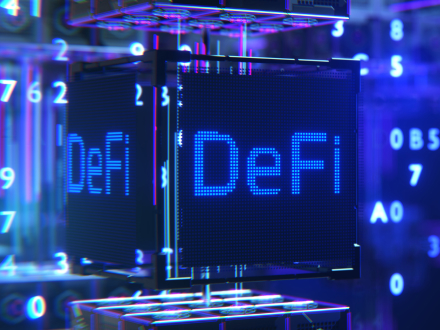


Il tuo messaggio è stato inviato.
Elaboreremo la vostra richiesta e vi ricontatteremo al più presto.

Iscrivendosi si accetta il nostro Informativa sulla privacy, compreso l'uso dei cookie e il trasferimento dei vostri dati personali.